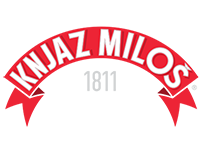-The film came from your research, when you were at the border between Slovenia and Italy you found a commune that you wanted to talk about. What did the process look like?
I was born there, I grew up in those parts, and it was always interesting to me that the area was naturally beautiful, but completely abandoned and without people. The mystery is why this is so, no one knew to explain why it happened. When I was studying film in Berlin and thinking about what I would do for my first feature film, I quickly came up with the idea of doing something there. When we conceived the film, we wanted to pay homage to the place and its fairy-tale tradition more than to make some reconstruction or give political criticism, we wanted to talk about what's left, and that is imagination more than anything else.
-You use a fairy tale structure, and you have studied experimental film. You use expressionistic, rich language, we learn more from the visual than the narrative.
I am also the director of photography on some other projects, probably because I studied classical film. From the beginning it was clear to us that we were not going to make a historical reconstruction, therefore we were looking for a language in which we could suggest what actually happened there but through some pictures. There was a very lively tradition of naive painting that we also know in Yugoslavia, they had one who was a hobo, for a bottle of wine he would draw something on the house. When I saw it, I knew immediately that the film should look like this. Not to approach the directing we see in 90% of films, but to try to present the film with an image that is sometimes a two-dimensional, light caricature.
- It is spoken in two languages, how did you handle it?
In fact it is spoken in three, there is also a local dialect. I was born there, my grandmother spoke a similar dialect, so I could speak a dialect with the locals. Non-professional actors in the film are locals. They did not have Slovenian schools until 1984; So they did not even learn literary Slovenian, let alone Serbo-Croatian, so they spoke some wonderful, old Slovenian dialect you hear in the film.
-The music is also very interesting, it talks about the characters and complements the visual structure of the story.
This film is a product of multiple authors, I always say that. I and Marina Gumzi, who wrote the script and produced the film, actually worked on it the most, we were really lucky to get a group of young filmmakers who worked on the film for little money but did more than any other. It was the same with music, all the time we were looking for music that would evoke that dark atmosphere with some fairytale quality. When we heard this instrument played by Hekla Magnúsdóttir, an Icelandic artist, we realized that this was exactly it.
.jpg)








